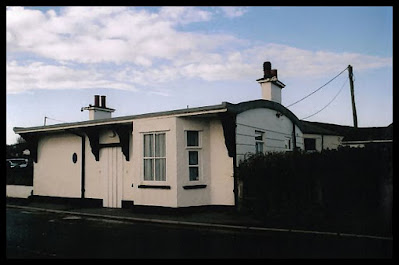A joint celebration of the 1000th anniversary of seaton in 2005, along with the centenary year of Rotary International, gave rise to the idea by Rotarian member Douglas Smith of providing blue plaques for the historic buildings in the town. The official English Heritage blue plaques are used to identify buildings where famous people once resided but, along with the expense and difficulties in gaining approval, this wasn't felt to be applicable. Therefore a different approach was used whereby the historic buildings themselves were highlighted, rather than who lived there.
With a short list of 20 buildings, 16 owners agreed to have blue plaques on their walls. Manufactured by Rob Gibbons, of R & H Signs, they were made in aluminium with a pvc laminate and bear both the Seaton Coat of Arms and the Rotary International symbol, together with a brief history of the building.
Check House
Check House was built by Sir William Trevelyan and his wife, Pauline, and was used as their seaside residence between 1864 and 1866. Originally called Calverly Lodge, it is thought that it may have been designed by John Ruskin. Sir William had inherited the manor of Seaton, and he and his wife developed and made many improvements to the area. Pauline was a patron of the Pre-Raphaelites and they entertained many well-known people of their day, including Thomas Carlyle and Florence Nightingale. Their friends also included Tennyson, Christina Rosetti, John Millais and William Morris’s wife Jane.
A grade II listed building, the interior includes a Beer Stone staircase with a wrought iron balustrade entwined with lilies. Now a Care Home, in 2005 an extension won the Healthcare Design Award for the best extension to an existing home.
The building itself is quite lovely, and there are some delightful examples of late Victorian Gothic features. Personally I feel that the additional check design on the new extension has taken a quirky, but beautifully designed building, and totally unbalanced it. Despite that, it's unusual and interesting with some fabulous history...just ignore the new bit; that's what I did when taking the photos! ;)
The separate page for Check House with a lot more history, information and photos, and can be accessed here.
Seaforth Lodge
Seaforth Lodge is a short distance along from Check House. and was built in 1863 for the Dowager Lady Ashburton, who also entertained noted visitors of the day, including the Carlisles and various members of the Pre-Raphaelite movement.
Still residential but it's now separated into different apartments. The main building, complete with an observatory on the roof, overlooks the cliffs, and at the front is a two-cottage building facing the road.
The separate page for Seaforth with more history, information and photos, can be accessed here.
Axmouth Old Bridge
Although it looks stone-built, the bridge was actually completely manufactured in concrete and moulded to look like stone blocks. Built in 1877 by Sir Walter Trevelyan, who was a keen advocate for its use, it is now the oldest mass concrete bridge in England.
Taken on a lovely misty day, the photo above shows the old bridge on the right with the new one on the left. The old bridge is now used as a pedestrian walkway.
Seen
at low tide, below, is a line of rocks just upstream from the bridge. I
did think this was part of the remains of two attempts to dam the river
during WWII, but have been recently informed that there's nothing left
of those, and that these piles are placed to protect the new bridge
piers from erosion.
Subsidence
at the Axmouth side of the bridge. This is the 'fishing side', whereas
the yachts and pleasure craft are moored on the Seaton side where they
can access the sea from the harbour.
A lot more information about Axmouth Harbour can be seen on its separate page here.
Axmouth Bridge Toll House
A toll bridge until 1907, the little toll house still remains on the Seaton side of the river and is now a residential house. The Lord of the Manor at that time was S. Sanders Stephens. He paid £2,200 towards the sum of £5,000 raised to free the bridge from tolls. Interestingly, Mr Stephens owned the company Stephens Ink and lived at the nearby Queen Anne style house, Stedcombe Manor...once known by locals as 'The Inkpot', both due to the style and the ink association.
And, as with the others, there's a full article of the Toll House with extra photos and information, which can be accessed here.
One of the things that I sometimes struggle with is what to include, and more importantly, what to leave out. It's very tempting to take photos of everything, just for the sheer joy of photography and working on my (now defunct) website. But, I sometimes have to remind myself that it isn't a gazeteer, but a personal journey of places that I've visited and found interesting. This is why I've only included the above blue plaque buildings in Seaton so far.
Mind, I haven't visited all of them so there may be additions on my blog if and when I do. :)



















No comments:
Post a Comment